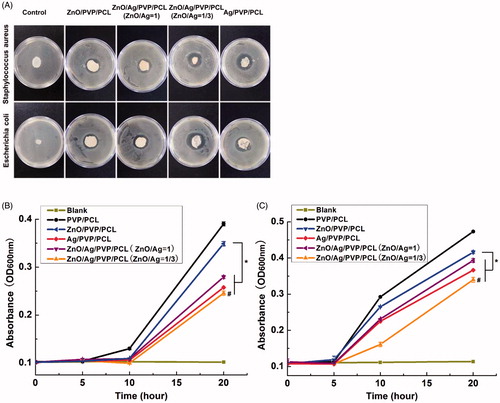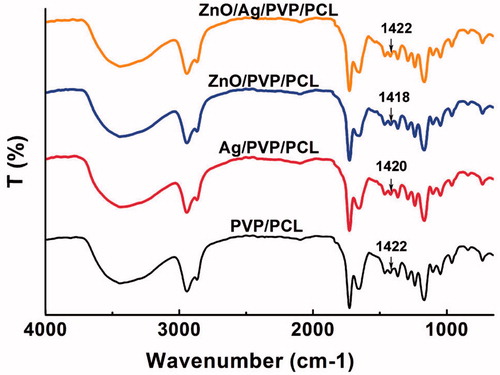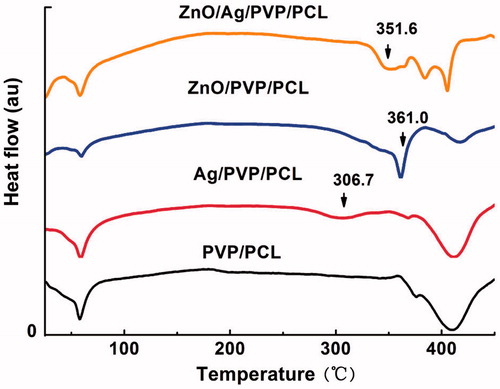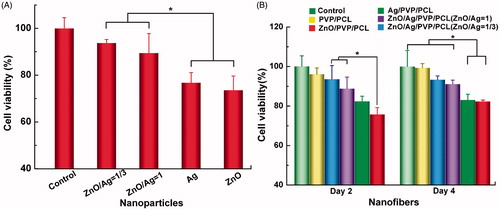Figures & data
Figure 1. Characterization of ZnONPs and AgNPs. (A) SEM image of ZnONPs. (B) Particle size distribution of ZnONPs (n = 50); (C) Ultraviolent-visible spectroscopy of ZnONPs. (D) SEM image of AgNPs. (E) Particle size distribution of AgNPs (n = 50). (F) Ultraviolent-visible spectroscopy of AgNPs.
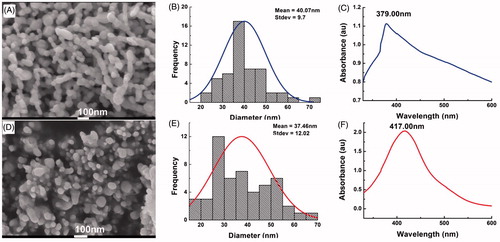
Figure 2. Optimization of nanofibre formulations on the voltage, flow rate and collected distance. The prepared nanofibres were observed by a microscope (200×).
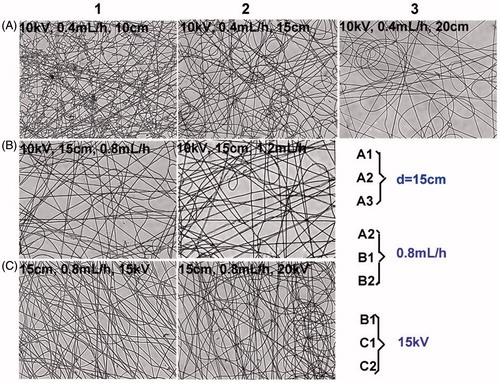
Figure 3. Influence of PVP/PCL proportion on nanofibre formulations. (A) Micrographs of PVP/PCL nanofibres at different mass ratios. (B) Influence of various proportion of PVP/PCL on the water vapour permeability. (C) Influence of various proportion of PVP/PCL on the swelling degree. (D) Influence of various proportion of PVP/PCL on the weight loss. *p < .05; **p < .01; ***p < .001, compared with the control group (n = 3).

Figure 4. Morphology and in vitro characteristics of ZnO/Ag/PVP/PCL composite nanofibres. (A) Drug-loaded nanofibre formulations visualized by scanning electron microscope (SEM), Scale bar: 1 μm; arrows represent nanoparticle mass. (B) The fibre diameter distribution of drug-loaded nanofibres.
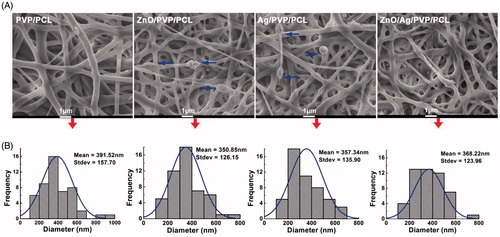
Figure 7. Physicochemical properties of the drug-loaded nanofibre formulations. (A) Water vapour permeability of drug-loaded nanofibres. (B) Swelling degree of drug-loaded nanofibres. (C) Weight loss of drug-loaded nanofibres. n.s., no significance (n = 3).

Figure 8. The antibacterial effect of the nanofibre formulations against Staphylococcus aureus and Escherichia coli. (A) Inhibition zone of the various contents of drug-loaded nanofibres. (B) Bactericidal kinetic study of Staphylococcus aureus and (C) Bactericidal kinetic study of Escherichia coli. *p< .05; #p<.05, compared with the Ag/PVP/PCL, ZnO/Ag/PVP/PCL (ZnO/Ag =1) and ZnO/PVP/PCL, respectively (n = 3).
